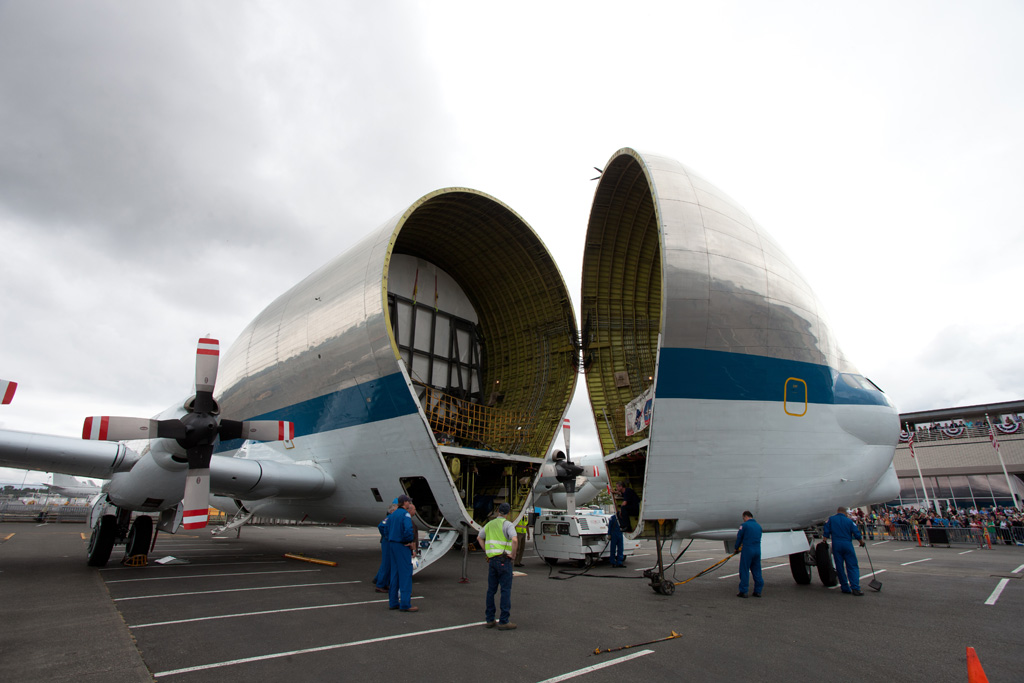Proof that whales can fly? The super-guppy landed at Redstone airfield today, carrying the cryo composite tank test article. Looking forward to breaking it! :)
Wednesday, March 26, 2014
Friday, March 07, 2014
Cryo Composite Tank Development Testing
NASA’s Game ChangingDevelopment Program is aiming to advance composite materials technology for the purpose of manufacturing light weigh liquid hydrogen (LH2) fuel tanks for the next generation of rockets, possibly starting as an upgrade to the SLS upper stage. Current technology involves baking composites in an autoclave, which is not very feasible for a 5.5 meter (~18’) diameter tank. A second hurdle is the fact that hydrogen has a way of permeating and escaping from most containers. If successful, this program will pave the way for industry to produce high performance composite materials at less cost, without the need for large autoclave ovens.
NASA’s Marshall Space Flight Center (MSFC) supported pressurized LH2 testing of the initial smaller 2.4 meter (~8’) tank last July.
NASA’s Marshall Space Flight Center (MSFC) supported pressurized LH2 testing of the initial smaller 2.4 meter (~8’) tank last July.
 |
| Small tank test, July 2013 |
 |
| Artists Rendition of the 5.5 Meter Tank |
 |
| Super Guppy- the aircraft that swallows space ships. |
This tank will endure more than mere pressurization with LH2. MSFC’s Special Test Equipment Branch (ET50) is designing a test apparatus to apply a combination of compression, moment, and shear loads. The final test is to failure. The test will take place at the 4699 facility, visible on Google Maps at https://www.google.com/maps/@34.6284812,-86.6728124,135m/data=!3m1!1e3
The test apparatus is composed of upper and lower “load spiders”. The test article will sit on the pads of the lower spider. The upper spider will be supported over the test article by a large pedestal structure. Sixteen load lines will push and pull between the top of the test article and the bottom of the upper spider. In the FEA contour images below, the hardware is depicted reacting to a complex loading. Deflections are highly exaggerated for clarity- the beams will only move about .13 inches. Two shear towers sit on either side of the setup, with the shear beam spanning them. Two additional load lines attached to the beam impart a shear load into the side of the test article. The upper spider is about 33 feet in diameter, for reference.
 |
| Shear Tower |
 |
| Lower Spider |
 |
| Shear Beam |
Update: The tank is at MSFC http://swampcastle-scrapbook.blogspot.com/2014/03/the-cryo-composite-tank-has-landed.html
Subscribe to:
Comments (Atom)






